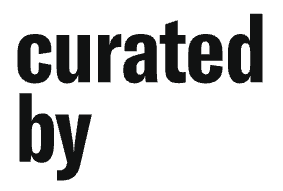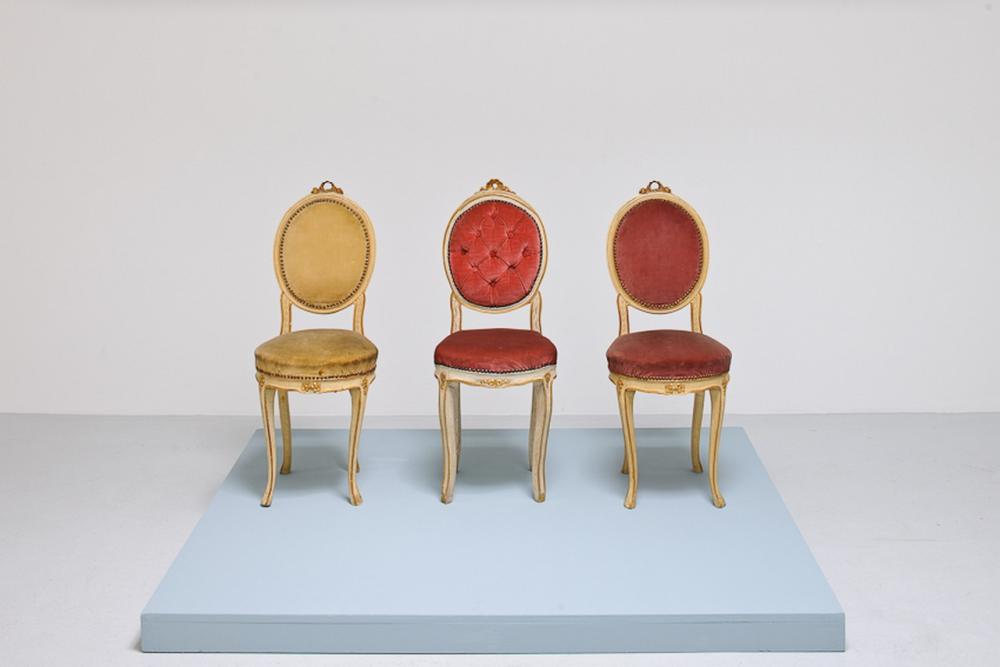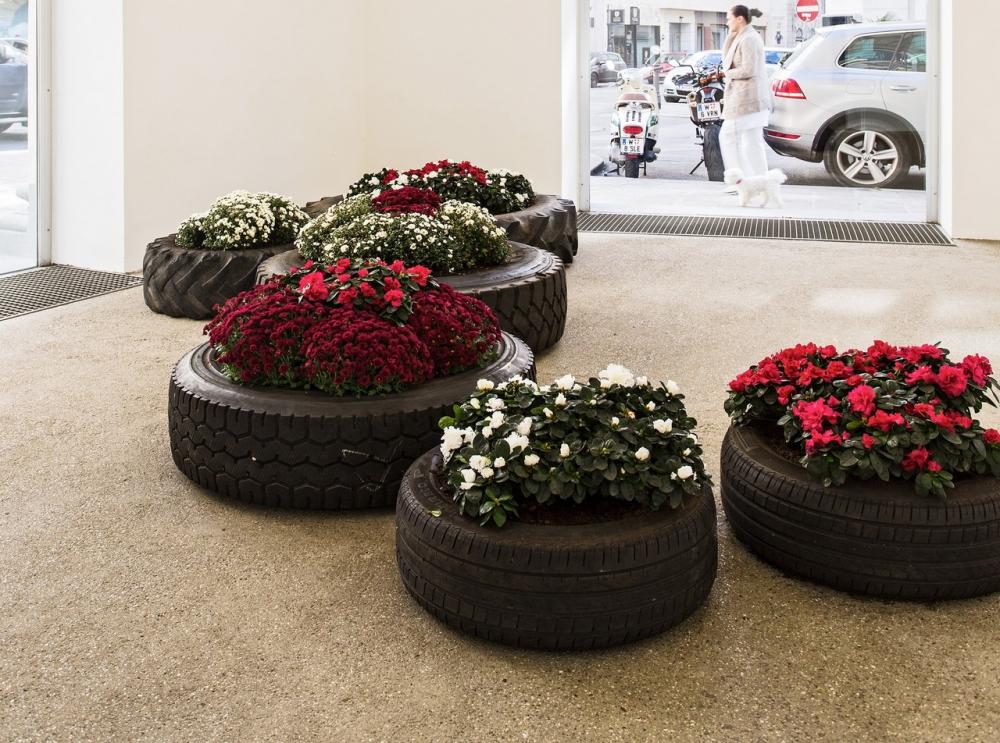Galerie Elisabeth & Klaus Thoman curated by Marion Piffer Damiani
„Eine Art Salon“
11.10 - 14.11.2013
Press release 

Galerie Elisabeth & Klaus Thoman, Seilerstätte 7, 1010 Vienna
www.galeriethoman.com
www.galeriethoman.com
Curator(s):
Marion Piffer Damiani
More 

Marion Piffer Damiani studied Art History and German Philology at Innsbruck University. Between 1989 and 2000 she managed the ar/ge kunst Galerie Museum Bozen in Bolzano and played an important role in establishing an international network of contemporary art in South Tyrol. Since 2000, she has worked as a free curator and art publicist and held a lectureship at the Free University of Bolzano. She became president of the foundation Museion – museum of modern and contemporary art Bolzano in 2010. Marion Piffer Damiani is a member of different juries and academic advisory boards at home and abroad. She has been involved in numerous exhibitions and written publications and articles on contemporary art with a particular focus on the history and development of contemporary art in South Tyrol.
Artist(s):
- John M Armleder
- Siegfried Anzinger
- Michael Kienzer
-
Thomas Feuerstein More*1968, lives in Vienna
-
Franz West MoreIn the 1980s, West repeatedly turned to the material of gold, as seen in works like Freude or Idiosyngramm, which oscillate between psychoanalysis, ornament, and irony. His pieces allude to cultural, psychological, and art-historical meanings, inviting layered associations—even if they often resist rational interpretation.
- Erwin Bohatsch
- Herbert Brandl
- Hermann Nitsch
- TAL R
- Otto Zitko
- Günther Förg
- Leiko Ikemura
- Florin Kompatscher
- Walter Obholzer
- Norbert Schwontkowski
- Erik Steinbrecher
Exhibition text
More
The success story of painting is owing mainly to the mobile picture panel that, while being a self-contained entity, circulates in the most diverse contexts and arrangements. The mobile tableau turns the presentation context into a picture puzzle. One and the same image moves easily from the neutral white of the art gallery to the institutional setting of a traditional museum, from the Gesamtkunstwerk of the self-organised art space to the domestic interior of a private environment, or being presented as an item of merchandise in an art auction. Keeping this in mind, a critical painting practice at all times will also entail dealing with strategies of setting and toying with modes of presentation.
One of the principal places for the circulation of pictures, however, especially also the painted ones, still is the art gallery. The exhibition "A kind of salon" at the Elisabeth & Klaus Thoman Gallery, on the occasion of this year's edition of curated by_ on the question of "Why painting now?," deals with "framework conditions" and, in reference to an early form of presenting the mobile panel painting in the academic salons (and implicitly the many countersalons), presents an artistically conceived accrochage. In the days of the salons, well-known artists took on the role of a tapissier or décorateur and oversaw the hanging of individual paintings in several horizontal rows, one above the other, against floral tapestries. Today, painting preferably appears in company within an open field of reference. In his series of "Furniture Sculptures" John M Armleder anticipates the "change of scenery" of mobile panel paintings by simply providing set pieces of possible furnishings to go with his paintings. The question as to the relation between a work of art and the world is very much inherent in all this, one that provides distance and the freedom to leave conventions and systems behind: "You write a narrative that reaches beyond yourself." (JMA)
Standing at the helm of "A kind of salon," as it were, is Erik Steinbrecher, born in Switzerland and living in Berlin. The artist's oeuvre is characterised by its humour and irony. He is best known for his rambling, associative encyclopaedic assemblages of individual pictures of various origins, taken from the inexhaustible image pool of everyday life. Steinbrecher positions, groups and shifts the images as in a layout, arranges them into neat compositions, toying with the traditional genre of painting, from the landscape to the interior, from the portrait to the multifarious variations of abstraction. The concept is based on the idea of a traditional salon between "art and life," paintings hanging on the walls separately or in neatly arranged groups, in the way of a collection, or in a playful manner corresponding with the objects in the room. Around Armleder's sculpure "FS 230" (1989), positioned centrally in the main room, that consists of three upholstered chairs on a pedestal painted in acrylic, Steinbrecher arranges a series of abstract tableaux by various artists, each of them unique and at the same time part of a system which it circulates in. The "layouts" do not follow historical patterns but rather unfold putative family resemblances, and, when sculptural "flower islands" by John M Armleder appear in the immediate vicinity of painting that reminds us perhaps of plant life, provoke a comparative perception of image and object.
The playing with references and allusions is continued in an assemblage of paintings and interiors, figures and disappeared figures, as well as a figurine "enlivening" the room. The latter, entitled "ER" (2013), and created by Steinbrecher himself, consists of a display dummy of a child, wearing a rubber mask and a white sports outfit comprising a men's polo shirt, sport socks and sneakers. Besides the elements of a stylised interior and a tamed nature by John M Armleder, Steinbrecher completes this fleeting "picturesque" scenery (in the sense of relating to pictures) of mutual referencing with a model (or phantom) of the human body. Who is ER? A guest? A visitor? ... A painter?
Marion Piffer Damiani, curator
with John M Armleder, Siegfried Anzinger, Erwin Bohatsch, Herbert Brandl, Thomas Feuerstein, Günther Förg, Leiko Ikemura, Florin Kompatscher, Hermann Nitsch, Walter Obholzer, Norbert Schwontkowski, Erik Steinbrecher, Tal R and Otto Zitko
Photos
John M Armleder: Furniture Sculpture 230
3 upholstered chairs on an acrylic-painted pedestal
Courtesy Galerie Elisabeth & Klaus Thoman Innsbruck/Wien Photo © Galerie Elisabeth & Klaus Thoman
John M Armleder: Apicomplexa (FS)
rubber, soil, flowers
Photo © Galerie Elisabeth & Klaus Thoman / Lena Kienzer
Siegfried Anzinger: Snakes
distemper on canvas
Photo © Galerie Elisabeth & Klaus Thoman / Lena Kienzer






